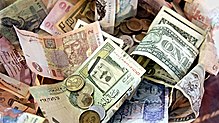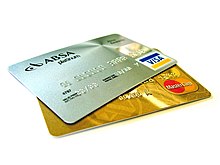
In economics, Cash is money in the physical form of currency, such as banknotes and coins.
Seigniorage, also spelled seignorage or seigneurage, is the difference between the value of money and the cost to produce and distribute it. The term can be applied in two ways:

The Deutsche Mark, abbreviated "DM" or "D-Mark" ( ), was the official currency of West Germany from 1948 until 1990 and later the unified Germany from 1990 until the adoption of the euro in 2002. In English, it was typically called the "Deutschmark". One Deutsche Mark was divided into 100 pfennigs.
Federal Reserve Notes are the currently issued banknotes of the United States dollar. The United States Bureau of Engraving and Printing produces the notes under the authority of the Federal Reserve Act of 1913 and issues them to the Federal Reserve Banks at the discretion of the Board of Governors of the Federal Reserve System. The Reserve Banks then circulate the notes to their member banks, at which point they become liabilities of the Reserve Banks and obligations of the United States.

A banknote – also called a bill, paper money, or simply a note – is a type of negotiable promissory note, made by a bank or other licensed authority, payable to the bearer on demand. Banknotes were originally issued by commercial banks, which were legally required to redeem the notes for legal tender when presented to the chief cashier of the originating bank. These commercial banknotes only traded at face value in the market served by the issuing bank. Commercial banknotes have primarily been replaced by national banknotes issued by central banks or monetary authorities.

The Philippine peso, also referred to by its Filipino name piso, is the official currency of the Philippines. It is subdivided into 100 sentimo, also called centavos.

The forint is the currency of Hungary. It was formerly divided into 100 fillér, but fillér coins are no longer in circulation. The introduction of the forint on 1 August 1946 was a crucial step in the post-World War II stabilisation of the Hungarian economy, and the currency remained relatively stable until the 1980s. Transition to a market economy in the early 1990s adversely affected the value of the forint; inflation peaked at 35% in 1991. Between 2001 and 2022, inflation was in single digits, and the forint has been declared fully convertible. In May 2022, inflation reached 10.7% amid the Russian invasion of Ukraine and economic uncertainty. As a member of the European Union, the long-term aim of the Hungarian government may be to replace the forint with the euro, although under the current government there is no target date for adopting the euro.
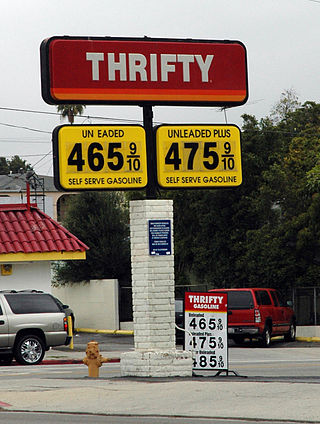
Psychological pricing is a pricing and marketing strategy based on the theory that certain prices have a psychological impact. In this pricing method, retail prices are often expressed as just-below numbers: numbers that are just a little less than a round number, e.g. $19.99 or £2.98. There is evidence that consumers tend to perceive just-below prices as being lower than they are, tending to round to the next lowest monetary unit. Thus, prices such as $1.99 may to some degree be associated with spending $1 rather than $2. The theory that drives this is that pricing practices such as this cause greater demand than if consumers were perfectly rational. Psychological pricing is one cause of price points.
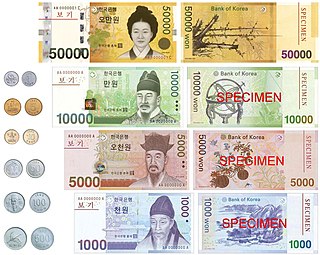
The South Korean won is the official currency of South Korea. A single won is divided into 100 jeon, the monetary subunit. The jeon is no longer used for everyday transactions, and it appears only in foreign exchange rates. The currency is issued by the Bank of Korea, based in the capital city of Seoul.
The New Taiwan dollar is the official currency of the Republic of China. The New Taiwan dollar has been the currency of the island of Taiwan since 1949, when it replaced the old Taiwan dollar, at a rate of 40,000 old dollars per one new dollar. The base unit of the New Taiwan dollar is called a yuan (圓), subdivided into ten chiao (角) or 100 fen (分), although in practice neither chiao nor fen are ever actually used.

The United States one-hundred-dollar bill (US$100) is a denomination of United States currency. The first United States Note with this value was issued in 1862 and the Federal Reserve Note version was first produced in 1914. Inventor and U.S. Founding Father Benjamin Franklin has been featured on the obverse of the bill since 1914, which now also contains stylized images of the Declaration of Independence, a quill pen, the Syng inkwell, and the Liberty Bell. The reverse depicts Independence Hall in Philadelphia, which it has featured since 1928.
Large denominations of United States currency greater than $100 were circulated by the United States Treasury until 1969. Since then, U.S. dollar banknotes have been issued in seven denominations: $1, $2, $5, $10, $20, $50, and $100.

Token money, or token, is a form of money that has a lesser intrinsic value compared to its face value. Token money is anything that is accepted as money, not due to its intrinsic value but instead because of custom or legal enactment. Token money costs less to produce than its face value. A banknote, e.g. a five-pound note, is token money because despite its value being 5 pounds it only costs significantly less to produce. A gold coin is not considered token money. The Token money system has been adopted in many businesses around the world as an effective way to exchange value between companies and customers. Token money as a system is predominantly used in mobile games, but is also used in the realm of e-commerce. Token money is similar to fiat money which also has little intrinsic value, however they differ in that token money is a limited legal tender. The adoption of token money has improved transaction efficiency, as the practicalty of transacting with sums of gold poses a larger security risk. In a commodity economy, money is a measure of the value of goods and services (prices) within a sovereign country or the same economy, as well as a particular commodity to pay off debts. The token is also used as a medium of exchange, as a store of value, and as a unit of account. Digital currencies using decentralized blockchain technology are also a form of token money.
The yuan is the base unit of a number of former and present-day currencies in Chinese.

Banknotes of the Canadian dollar are the banknotes or bills of Canada, denominated in Canadian dollars. Currently, they are issued in $5, $10, $20, $50, and $100 denominations. All current notes are issued by the Bank of Canada, which released its first series of notes in 1935. The Bank of Canada has contracted the Canadian Bank Note Company to produce the Canadian notes since then. The current series of polymer banknotes were introduced into circulation between November 2011 and November 2013. Banknotes issued in Canada can be viewed at the Bank of Canada Museum in Ottawa.
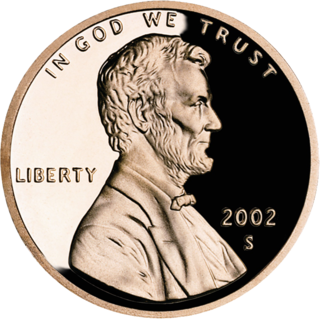
A debate exists within the United States government and American society at large over whether the one-cent coin, the penny, should be eliminated as a unit of currency in the United States. The penny costs more to produce than the one cent it is worth, meaning the seigniorage is negative – the government loses money on every penny that is created. Several bills introduced in the U.S. Congress would have ceased production of pennies, but none have been approved. Such bills would leave the five-cent coin, or nickel, as the lowest-value coin minted in the United States.
The "hot hand" is a phenomenon, previously considered a cognitive social bias, that a person who experiences a successful outcome has a greater chance of success in further attempts. The concept is often applied to sports and skill-based tasks in general and originates from basketball, where a shooter is more likely to score if their previous attempts were successful; i.e., while having the "hot hand.” While previous success at a task can indeed change the psychological attitude and subsequent success rate of a player, researchers for many years did not find evidence for a "hot hand" in practice, dismissing it as fallacious. However, later research questioned whether the belief is indeed a fallacy. Some recent studies using modern statistical analysis have observed evidence for the "hot hand" in some sporting activities; however, other recent studies have not observed evidence of the "hot hand". Moreover, evidence suggests that only a small subset of players may show a "hot hand" and, among those who do, the magnitude of the "hot hand" tends to be small.

In a cashless society, financial transactions are not conducted with physical banknotes or coins, but instead with digital information. Cashless societies have existed from the time when human society came into existence, based on barter and other methods of exchange, and cashless transactions have also become possible in modern times using credit cards, debit cards, mobile payments, and digital currencies such as bitcoin.

The United States two-dollar bill (US$2) is a current denomination of United States currency. A portrait of Thomas Jefferson, the third president of the United States (1801–1809), is featured on the obverse of the note. The reverse features an engraving of John Trumbull's painting Declaration of Independence.
The pain of paying is a concept from Behavioral Economics and Behavioral Science, coined in 1996 by Ofer Zellermayer, whilst writing his PhD dissertation at the University of Carnegie Mellon, under supervision of George Loewenstein. The term refers to the negative emotions experienced during the process of paying for a good or service. In other words, to make this simpler to understand, the more a purchase hurts, the less people are willing to make this purchase. During the payment process, the handing over of money is akin to losing money. As most people are loss averse, this is experienced as a negative feeling, and as such can also be used to avoid or reduce spending. In 2023, Farnoush Reshadi and M. Paula Fitzgerald reviewed the literature on pain of payment and offered a new definition of pain of payment that distinguishes between two types of pain of payment: immediate and anticipated. Immediate pain of payment is “the negative psychological affective reaction consumers experience immediately after they become cognizant that they havelost a certain amount of their financial resources.” Anticipated pain of payment is “the negative psychological affective reaction consumers experience when they become cognizant that they will or may lose a certain amount of their financial resources in the future.” These new definitions consider that pain of payment can be experienced both after and before making payments, can be experienced when losing any type of financial resource that can act as a source of security, and is only evoked when consumers become aware of the financial loss. The pain of paying has been tested in several contexts, and has been found to differ per payment method. The pain of paying is often heralded as a tool to curb individuals' spending.
